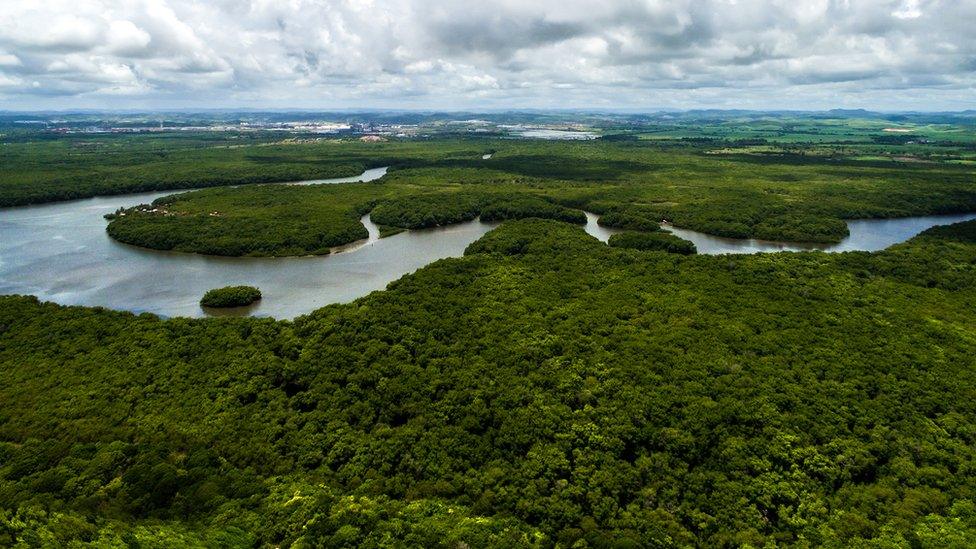Large parts of Amazon rainforest emitting more CO2 than they absorb
- Published

Large parts of the Amazon rainforest are now releasing more carbon dioxide (CO2) into the air than it can absorb, say scientists.
Too much CO2 in the air can lead to problems for the environment like global warming and climate change.
In the past the huge forest in South America acted like a carbon 'sink' - the trees and plants there were absorbing lots of carbon dioxide that was being produced in the world and the amount of the gas it released was far less.
However new research has confirmed that this has changed and it's mainly because of deforestation.
Earlier this year, a study showed that the rainforest in Brazil released about 20 percent more CO2 into the atmosphere than it took in over the period from 2010-2019.
The south-east is worst-affected, say scientists, with higher rates of tree loss and an increasing number of fires.
Temperatures there have risen by three times the global average during the hottest months.
Deforestation is the deliberate destruction of rainforests to make way for areas for human use, such as farmland for cattle, crops, or wood to be used for building.
Many forests around the planet have been cleared in this way but the most famous is the Amazon rainforest - the world's largest tropical rainforest.
Most of the CO2 the rainforest is now releasing into the air is from fires there. Many of the fires are set on purpose to clear the land so that it can be used for cattle farming or growing soybeans.
But even without fires, hotter temperatures and droughts mean parts of the Amazon have become a source of CO2, releasing more of it rather than absorbing it, and this is particularly worrying to scientists.
The researchers are worried that the changing climate is also interfering with rainfall. Droughts and heatwaves can also lead to more tree deaths and fires.
Fires are a big problem for the future of the Amazon rainforest
How was the research done?
The research was carried about by a team from the National Institute for Space Research in Brazil.
The team used small planes flying every two weeks to measure CO2 levels above the forest over the last decade.
It found fires produced about 1.5bn tonnes of CO2 a year but the plants and the forest growth was only removing 0.5bn tonnes.
- Published31 August 2019
- Published17 September 2020
- Published5 May 2021
